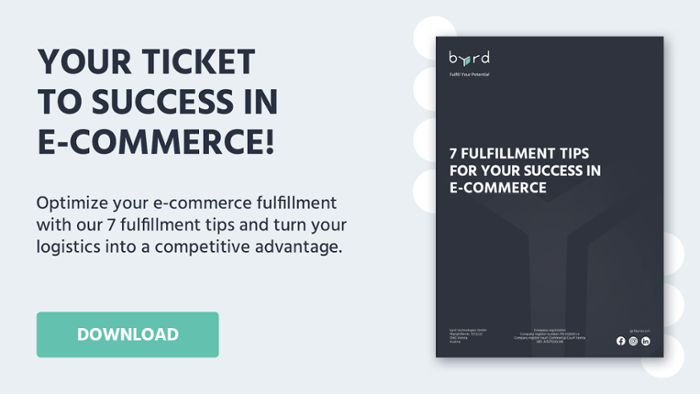Amazon FBA: Advantages and Disadvantages of using Fulfilled by Amazon
Table of Content
Fulfillment by Amazon, usually referred to as FBA, is universally known in the e-commerce industry. However, many don’t know how to exactly use this fulfillment method from Amazon. What costs are associated with it, and what are the advantages and disadvantages of using Amazon FBA. All of this you will learn here in our compact overview.
How to use Amazon’s FBA method
As you know, FBA stands for Fulfilled by Amazon. This means that Amazon takes care of the storage of your products, order processing, and customer support. To use FBA, you need to follow these steps:
- Set up an Amazon Seller account
- Add the FBA feature to your account
- Create your Amazon Product Listing and Inventory
- Prepare your products for shipment to an Amazon Warehouse
- Send your products to a warehouse
Prerequisites for using FBA
Amazon has strict regulations that you must meet as an FBA seller. Most of them are specific to each product category. You can find more info about that here. Some overarching requirements are:
- all products need to be barcoded
- use six-sided boxes
- boxes need to be made of rigid cardboard
- warehouse workers do not assembly any kind of order
Amazon FBA Prices in the UK
FBA Individual Plan
You will be charged £0.75 for each sale of an item via Amazon.co.uk. This cost comes in addition to the percentage referral fees (sales fees) which you will learn more about in a moment. (Fee in EU €0.99)
FBA Professional Plan
If you use this plan, you will incur monthly fixed costs of £25. In return, you save the additional £0.75 per item. This means that it pays off to take the professional plan if you sell 34 or more products per month. (€39 in EU, meaning that it pays off when you sell 40+ items per month)
FBA Referral Fees in the UK
Amazon’s referral sales fee differs depending on the product categories. In most cases, this fee is between 7.14% and 15.3% in the UK. Only accessories for Amazon devices incur a whopping 45.9%.
It is also important to know that for almost all items a minimum sales fee of £0.75 (€0.30 in EU) is charged.
Storage Fees at Amazon in the UK
Amazon’s storage fees in Europe are calculated by cubic meters per month. In contrast, they are calculated based on cubic feet in the UK. The storage costs differ according to product category and season.
The seasons are divided into January to September and October to December, respectively. At the end of the year, storage becomes much more expensive (around 40% more). In addition, a distinction is made between the categories of clothing, shoes, and bags or all other categories. In addition, there are individual prices for oversized or dangerous goods.
Storage fees in Amazon markets in the UK range from £0.40 to £1.05 per cubic foot per month. (As of 2021)
How to calculate cubic feet from cm?
From cm: length (cm) × width (cm) × height (cm) ÷ 28316.85 = cubic feet.)
Other Amazon Fulfillment Fees
There are also other fees that may apply to Amazon FBA sellers. These include the closing fees for media items, additional inventory fees, (long-term storage fees, overage fees, removal order fees), refund administration fees, and more. Make sure you know exactly what other fees are involved. This will prevent you from getting an unpleasant surprise.

Advantages of Fulfillment by Amazon
- Save important resources: time, manpower, fixed costs
- Fast delivery through Amazon Prime
- Extremely high number of visitors
- Trust of customers (name, awareness & popularity of Amazon)
- Fragile products are well protected by Amazon’s packaging. In case of problems, Amazon usually takes over most of the costs
- Returns: Amazon takes care of it
- Flexibility in location (worldwide shipping)
- Single bank account (worldwide shipping)
- Weekly payout
Disadvantages of Amazon FBA
- Large quantities required for purchases (financing & cash flow).
- For returns of damaged products, usually, only about half of the product price is refunded. This can result in losses
- No influence on return policies (Amazon prioritizes the end customer experience over the impact on Amazon Sellers)
- So-called co-mingling. Products are sorted by type. So customers may not get the products you delivered to the Amazon Warehouse
- High storage costs, which remain the same regardless of sales.
- Other costs make your profit margins melt away
- Steady increase in prices and stricter regulations
- Inventory planning can be problematic
- Strict regulations and high standards for each new stocking. This includes things like labeling individual products
- No opportunity for branding
- Amazon as a potential competitor (Amazon Basics are products that are copied from sellers)
- High competition especially in terms of pricing with other Amazon Sellers
- Loss of control (packaging, customer support, limited data)
- Impersonal service
- No direct contact with your customers (who are your buyers? New trends and customer needs are easily overlooked)
- No customer loyalty (thus no cross-selling or up-selling possible)
- Payment methods are predefined
- Referrals (when asked “Where did you get that?” customers usually mention Amazon and not your brand)
So, while Fulfillment by Amazon is undoubtedly an attractive sales option in many cases, there are also some small and large drawbacks that you need to be aware of.
For this reason, e-commerce companies are increasingly looking for alternatives. These solutions are frequently used as a second mainstay alongside FBA activities. That way you can reduce the dependency on Amazon, while maintaining contact with customers, offering better service, and putting the company’s own brand in the spotlight. In addition, greater profit margins can be achieved through greater differentiation.
But what are the alternatives to Fulfillment by Amazon?
Alternatives to Amazon FBA
- FBM & 3PL
- FBM & In-house Fulfillment
- SFP & 3PL
- SFP & In-house Fulfillment
Amazon FBM & Fulfillment Company
Amazon’s Fulfilled by Merchant (FBM) or Merchant Fulfilled Network (MFN) gives sellers the ability to sell items through the Amazon platform without using Amazon Fulfillment.
Online retailers are therefore responsible for order processing themselves. In most cases, services from 3PL companies such as byrd are used for this purpose. This enables a logistics level like Amazon Fulfillment, as well as sales on the Amazon platform. Yet it allows merchants to be more flexible and less dependent.
Thus, the FBM method in combination with a 3PL company is the solution that combines the best of both “worlds”. In addition, further sales channels can be integrated. Therefore, cooperation with 3PL companies represents the most optimal solution for a multi-channel strategy for many merchants.
Getting started is easy. A standardized Amazon fulfillment integration makes the connection between Amazon and byrd child’s play.
Amazon FBM & In-house Fulfillment
Of course, it is also possible to take order fulfillment into your own hands. This is an option especially relevant for small sales volumes. However, once the number of sales increases, most entrepreneurs quickly realize that automating order fulfillment can be a good idea.
As a rule of thumb, it is recommended that logistics should be outsourced to specialists from a quantity of 100 shipments per month. This increases fulfillment efficiency and delivery speed. Thus, new resources are freed up in e-commerce companies, while customer satisfaction increases.
Amazon SFP & Fulfillment Company
A third option that allows sellers to combine the advantages of being able to sell with the Amazon Prime badge like with the FBA option as well as benefiting from the advantages of the FMB method (building a brand, offering customized solutions, turning first-time buyers into loyal customers, collecting date, etc.).
Some of the market-leading fulfillment companies offer SFP as a service. They will help you to meet the strict logistical regulations to be accepted for the SFP program.
Amazon SFP & in-house Fulfillment
If you can meet these strict rules by Amazon and you're confident that there are hardly any mistakes in your order fulfillment, then in-house logistics is another option. That, however, should only be done by enterprises who have plenty of years of experience and a lot of know-how about logistics within their company.
Summary of Amazon’s FBA Option
How do you use FBA? What are the requirements for using FBA? How much does FBA cost in the UK? What are the advantages of Fulfilled by Amazon and what are its disadvantages? Are there any attractive alternatives to FBA?
All these questions have been answered in this article. In summary, FBA can be a very attractive e-commerce solution. However, there is also a great dependency of Amazon sellers on the American giant. Therefore, a large part of sellers is looking for alternatives in order to position themselves more broadly and to be able to reduce their dependency. In addition, alternative options offer more flexibility and the possibility of brand development.
That is why, for many of these e-commerce companies, the combination of the FBM or SFP methods with 3PL services is the optimal solution.
If you want to know more about FBM, check out our blog on the advantages and disadvantages of FMB versus FBA.
